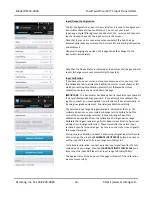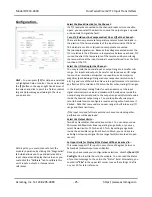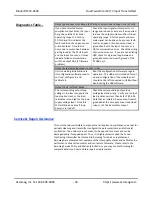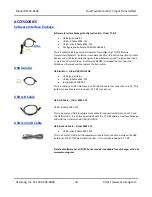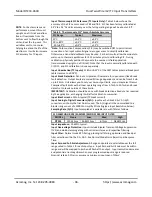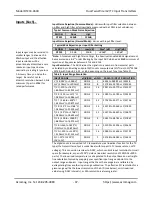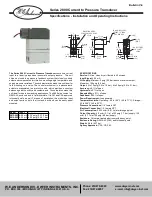
Model DT233-0600
Dual Two-Wire mV/TC Input Transmitters
Acromag, Inc. Tel: 248-295-0880
- 29 -
http://www.acromag.com
- 29 -
https://www.acromag.com
BLOCK DIAGRAM
How It Works
Key Points of Operation
-
Loop Powered
- Inputs/Outputs individually
isolated.
- Output loop is Not Polarized.
- Input circuit common is
connected to USB ground.
- USB powers a portion of the
input circuit when connected,
but not the output. This allows
demo reconfiguration without
powering output loop 1.
This transmitter uses a microcontroller and two high-resolution A/D
’s
to convert the
input signals and transmit this data along an isolated SPI bus that uses digital
isolators to transmit signals to isolated current DAC
’s
in each output. Power for the
common isolated input 1 side of the circuit is provided via an isolated flyback
converter operating in parallel with output loop 1. Setup involves selecting the
input range (T/C type or ±100mV or ±1V), selecting a normal or reverse acting
output, selecting a filter level, and scaling your input range endpoints to each
output range zero/full-scale endpoints. I/O scaling can also be done in reverse to
produce a reverse acting output signal. The maximum over-range output is
approximately 24mA, the minimum under-range is 3.6mA. Refer to the block
diagram to gain a better understanding of how this transmitter works. Note the
input 1/USB, input 1, and each output/power circuit are isolated from each other.
The USB port ground is common to the input 1 circuit ground and USB drives power
to input 1 when connected
. The USB port ground of most PC’s is also common to
the USB cable shield and earth ground and input sensors could be grounded or
ungrounded. For this reason, it is recommended that USB signals be isolated when
connecting to a PC to prevent a ground loop from occurring between the PC earth
ground and a grounded input sensor, which would have the negative effect of
pulling the input 1 bias supply to ground, clipping the negative portion of the
bipolar input 1 range.
6
5
8
7


